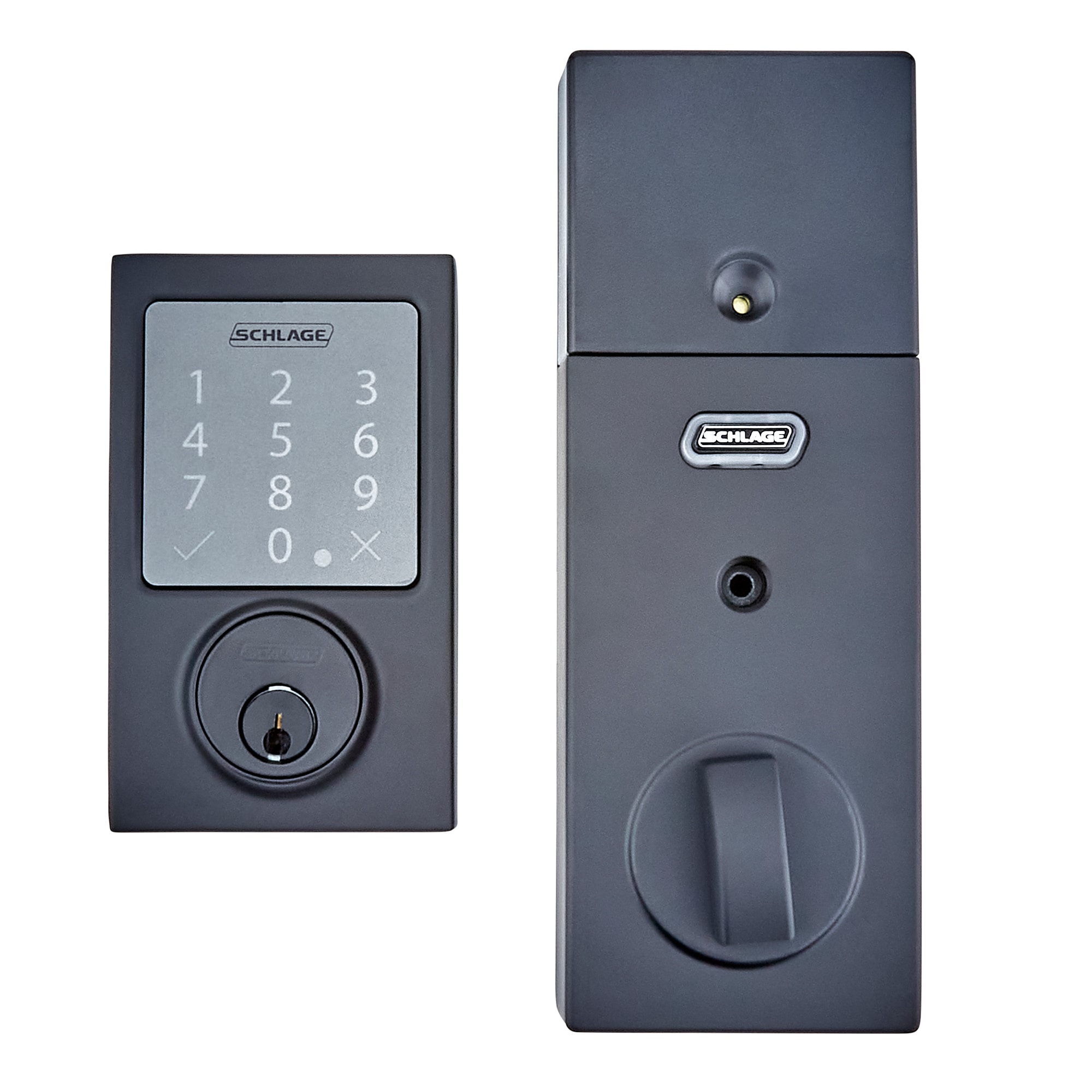
Cove provides the same efficiency as a traditional security system but at a fraction the cost. It offers 100% cellular communication, 24 hour backup battery, smash and grab protection, and 100% cellular connectivity. If the system detects something amiss, you will be notified via InstaText. Depending on the plan, you may even be able to use voice commands or Alexa to control the system.
The only way to manage the system is through Cove's hub
The Cove Base Station is the central control centre for the Cove system. It has a touch screen panel that controls the Cove system. It includes controls to arm or disarm the system, adjust volume, view personal settings, add sensors, and more. The unit also has a backup battery to power the system for up to 24 hours.
The Cove system is compatible with Amazon Alexa or Google Assistant. It allows users to arm and disarm the system using voice commands, but is limited in its functionality compared to other smart home products. It is a viable option for homeowners looking to maintain basic security but want to be able to integrate smart home functionality.
Plans include Alexa and Google Home voice control
Cove security systems offer voice control integration to Alexa and Google Home voice-assistants. You can control your system from anywhere with Alexa and Google Home. You can also set up a hostage code that will notify the monitoring center in the event of an intruder trying to disable the system. Both systems work with Amazon Echo products and can integrate with Google Assistant, Alexa and Google Assistant.

Cove's security system is available in two versions: preconfigured or buildable. A base unit with touch-screen panels 7 inches in size is the basis of the Cove basic system. This device costs $184. The Cove security device is easy to install and to use.
InstaText notifies emergency contacts
Cove security systems can send texts to emergency contacts you select in the event of a security crisis. This lets them respond to the emergency and dismiss the alarm, if applicable. The system also allows you to provide a password so emergency responders can reach you directly. If you don't want to give a password, you can easily add emergency contacts to your Cove system.
Cove's security system for emergency response is UL-listed, TMA Five Diamond Certified, and has two hot-redundant locations. Cove's security alarm system offers two-way communication. In the event that the security system fails to reach the customer, the Cove staff will text the customer back to inquire if they can help. Once you respond, the Cove team members will send help to your home within 30 seconds.
Prices
Cove is a home-security system that provides the same efficiency as traditional systems but costs a fraction of what they cost. It features 100% cellular communications, a backup battery and smash-and–grab protection. Cove will send an alert if anyone attempts a break-in to your home, or to steal your valuables.
Cove's basic protection system is free, but you must pay for monitoring for the first 36 months. There are additional options for additional monitoring, but you'll have to pay for them upfront. It is recommended that you start with a basic Cove system. You will receive a basic Cove security system that includes motion sensors and door sensors. There is also an indoor camera for free. If you decide to upgrade to more sophisticated security, you can purchase more advanced equipment over time.

Customer service
Cove Security offers home security systems for a free 60-day trial. For a full refund, you can return the security system within the 60-day period. The company will also pay for shipping costs. This is significantly more than the 30-day guarantee offered by most security providers who usually only offer a money-back guarantee.
Cove's customer service staff can be reached 24/7 by phone or email. You can chat with customer service representatives on the internet between 10:00 a.m. Eastern Standard Time (EST) and 6:00 p.m. Eastern Standard Time. You can also access online video tutorials from Cove to assist you in setting up your security system.
FAQ
Which home security company is best?
ADT is the best home security company. They provide 24/7 monitoring at an affordable cost. The customer support team is available 24/7 and can resolve any issue within minutes.
ADT also offers an iOS and Android app. So you can check your home anytime, anywhere.
Which home security system is the most highly rated?
ADT Pulse is the most widely used home security system.
How much does a quality home security system cost you?
A good home security system will cost around $2,500. It may seem like a large sum, but the security and peace of mind that you will get from a home with a good system is very affordable.
How much should alarm monitoring cost?
Alarm monitoring prices can vary depending upon how often it is to be monitored, what type of equipment you need, as well as whether you are looking at an annual or one-time fee.
Do I really want a home alarm?
A home security system is essential for anyone who owns a house. Anytime, a burglar can break into your home without warning. They'll take anything they want, including expensive electronics and jewelry. And if you leave your doors unlocked, they could just walk away with everything.
A home security system can protect your home by sending alerts to you when anything happens. This includes motion detection, sending alerts via your mobile device, recording activity and allowing you access to the footage.
You don't have to invest in a sophisticated home security system if you prefer not to. A simple DIY camera will do the trick. These devices let you see who's at the front door and send you notifications when they enter or exit. These devices won't prevent intruders from breaking into the home.
What is the best wireless system for security?
D-Link Wireless Security System, which I highly recommend, is the best wireless security solution. It's also one of the most cost-effective systems. Everything you need is included in one package. It includes a camera with motion sensor and a remote controller. You just need to plug it in and follow these simple instructions.
Which Home Security Systems Cannot be hacked?
This depends on what definition you use of hacking. Hacking refers unauthorized access to computer systems and networks. Hacking is impossible for most home security systems because they do NOT contain software that can be remotely controlled. They will not permit anyone to enter your house without your permission.
If the home security system is connected to the Internet, however it can be hacked. These systems typically require a password for operation, so anyone who knows the correct password can hack them.
Statistics
- That's probably why Cove has a whopping 98%* customer retention rate. (safewise.com)
- Related questionsHome security systems that are 100% DIY (safewise.com)
- (In my experience, the discount on my home insurance covered about 25 percent of the subscription of an average plan, but your mileage may vary depending on your location and the size of your home.) (theverge.com)
- Depending on your insurance, 24/7 professional monitoring may qualify you for as much as 15% off your premium. (safewise.com)
External Links
How To
How to Install a Home Security System
A home alarm system is a device which monitors your home and alerts when there's an activity. It could be motion sensors, doorbell cameras, smoke detectors or burglar alarms. A home security alarm system often includes one or two sensors (e.g., motion detections), which send signals to the control panel when they detect movement. The signals are then sent to a control panel where they're monitored and recorded. If something goes wrong, like someone breaking in to your house, the control panels sends an alert to your phone or tablet, your computer, or voice assistant. You will immediately be notified and can take appropriate action.
The first step to installing a home security system is choosing the right type of sensors for your home. There are two main types. Active and passive sensors. Passive sensors don’t require batteries. They only pick up sounds, vibrations and other signals from their environment. These sensors include sirens, buzzers, and doorbells. Active sensors transmit data via electricity. Examples of such sensors include cameras and motion sensor.
There are many sensors brands today. Each brand comes with its own pros and cons. For instance, some sensors can be weatherproof while others don't. Some include built-in speakers to allow you hear them even when they are outside. Some only work indoors. Some are basic while others offer advanced features, such as night vision.
After choosing the best sensor type for your property you can choose a manufacturer. This will make sure that your sensors function well together. There should be many options at your local hardware store.
Once you have selected a brand of sensor, you need to decide the number you wish to buy. Depending on whether you live alone or with your family, most people will start with just one or two sensors. If you have plans to purchase additional sensors in the future, it might be worth buying more than you currently need.
Next, decide where you want the sensors to go. Do you want them near windows and doors? Or are you happy to keep them hidden? Make sure you get permission before placing them around your property. They should not be in conflict with any electrical outlets.
Now that you know where you want to put your sensors, you'll need a way to connect them to your control panel. You might need a power adapter for your setup. Once everything is set up, it's time to start monitoring your property.